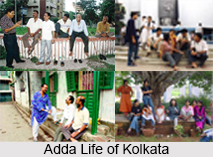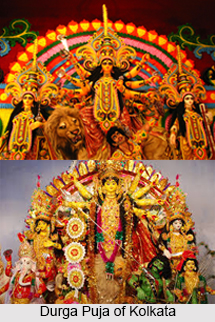 Culture of Kolkata has the portrayal of east India culture. Culture of Kolkata reveals the drama, theatre, art, music and adda. Kolkata unfolds diversified cultural heritage and significance for which the city is quoted as the "Cultural capital of India"- City of Joy.
Culture of Kolkata has the portrayal of east India culture. Culture of Kolkata reveals the drama, theatre, art, music and adda. Kolkata unfolds diversified cultural heritage and significance for which the city is quoted as the "Cultural capital of India"- City of Joy.
Importance of Culture of Kolkata
The unique culture of Kolkata upholds the very spirit of Kolkata as a breeding ground of the literary and the artistic thoughts. It is not only the intellectual life, but also the social life and the style of living of the Kolkatans murmurs the culture of Kolkata.
Social Culture of Kolkata
In the social life of Kolkata, the "Para" culture shares a significant position. The Kolkatans represent a strong sense of community. Normally every Para has a clubroom or the community hall and a playground. "adda" is an inseparable part of Para. People habitually indulge in "Adda" or leisurely chat, which includes almost everything from, outrageous slander to witty banter and limericks.
Religious Culture of Kolkata
The religious antiquity shares a significant part in the cultural heritage of Kolkata. The majestic buildings across the city of Kolkata, adorned with the Gothic, Baroque, Roman, Oriental and Indo-Islamic motifs utter the fact that Kolkata was once colonized by those civilizations and religious groups. Kolkata shares the status of a multi-ethnic city till date. From Dakhineshwar to Metiabruz Imambara or from St Paul"s Cathedral to Magen David Synagouge or from Fire temple to Chitpur Jain Temple, this city has an amalgamation of religious culture.
Colonial Culture of Kolkata
The colonial buildings, which are still being maintained, have been declared "heritage structures". The Indian Museum, established in 1841 with a vast collection of antique Indian History and pieces of art, attributed cultural heritage to Kolkata. The Victoria Memorial hall, one of the famous tourist spot reveals the British culture, once prevalent in Kolkata. The National Library (leading public library in India) and the Academy of Fine arts and the art galleries, are the representation of the indigenous culture of Kolkata.
Entertainment in Kolkata
The drama or theatre and jatra or Tollywood commercials or parallel movies constitute the cultural institution of Kolkata. But with the days going the cultural interest in Kolkata is shifted to the films and the daily soaps. The Hollywood and the Bollywood Movies are in great demand among the youngsters. Tollygunj in Kolkata is the abode of the Bengali Film Making industry "Tollywood".
Food Culture of Kolkata
The food habits of Kolkata are the key elements to denote the essentially Bengali Culture The principal items of the Kolkata cuisine mainly include rice and fish curry. The street food here is globally acclaimed after Bangkok or Delhi.
Festivals and Fairs in Kolkata
Durga Puja, Christmas, Eid are the most notable religious and social festivals in Kolkata. Here it forms a grand social assembly in these festive times. The festivals of other communities sharing an equal importance epitomize the multi-ethnic culture of Kolkata. The cultural fairs and festivals like the Kolkata Book Fair, Dover Lane Music Festival, Kolkata film Festival and National Theatre Festival, fetch a group of populace belonging to different sects. These festivals unfold the mixed culture of Kolkata cosmopolitan.
Related Articles
West Bengal, Indian State
Cities of West Bengal
Culture of West Bengal
Tourism In West Bengal
Kolkata
Economy of Kolkata
History of Kolkata
Birla Academy of Art and Culture Museum
Tollygunge Agragami
Alipur
Kalighat Paintings



















